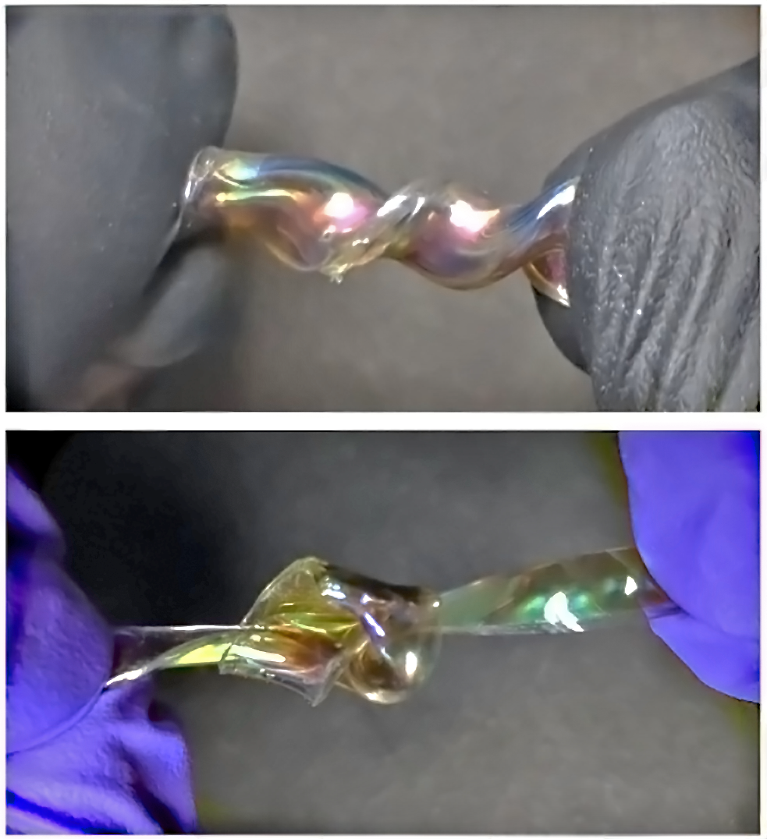
Mechanochromatic materials that change colour in response to mechanical forces. Credit: Sahu, R.R. et al.
A single-step method to make colour-changing nanostructures that respond to mechanical forces could speed up bulk manufacture of reflective displays and sensors1.
Chromogenic and mechanochromic structures — essential for visual communication and sensing applications — are not commonly used because the process to create them is complex.
A scalable technique to control the structure of these materials, allowing their colour to be altered, requires precise control of the size and shape of the active material on an elastomeric substrate.
Researchers at the Indian Institute of Science, Bengaluru, exploited capillary interactions between gallium nanoparticles and a silicone polymer substrate called polydimethylsiloxane (PDMS) to cut down the lengthy production steps usually needed.
The team deposited gallium — a liquid metal that can manipulate and control the behaviour of light at nanoscale — onto PDMS substrates by single-step thermal evaporation. Capillary interactions between the PDMS oligomers (building blocks) and liquid gallium formed gallium nanostructures.
By adjusting the oligomer composition, the researchers could control the formation of multiple nanostructures and achieve different colours across 30-centimetre-square areas in one go.
The fabrication process led close positioning of gallium nanodroplets. The small gap between droplets triggered interactions that exploited gallium’s light-manipulating properties enabling multiple mechanoresponsive structural colours.
Liquid metals, like gallium and its alloys, could have applications in visible photonics, the researchers say. By designing prototypes, the team showed how these materials might have broad applicability in reflective displays, sensors for monitoring body parts and real-time force-mapping devices.
